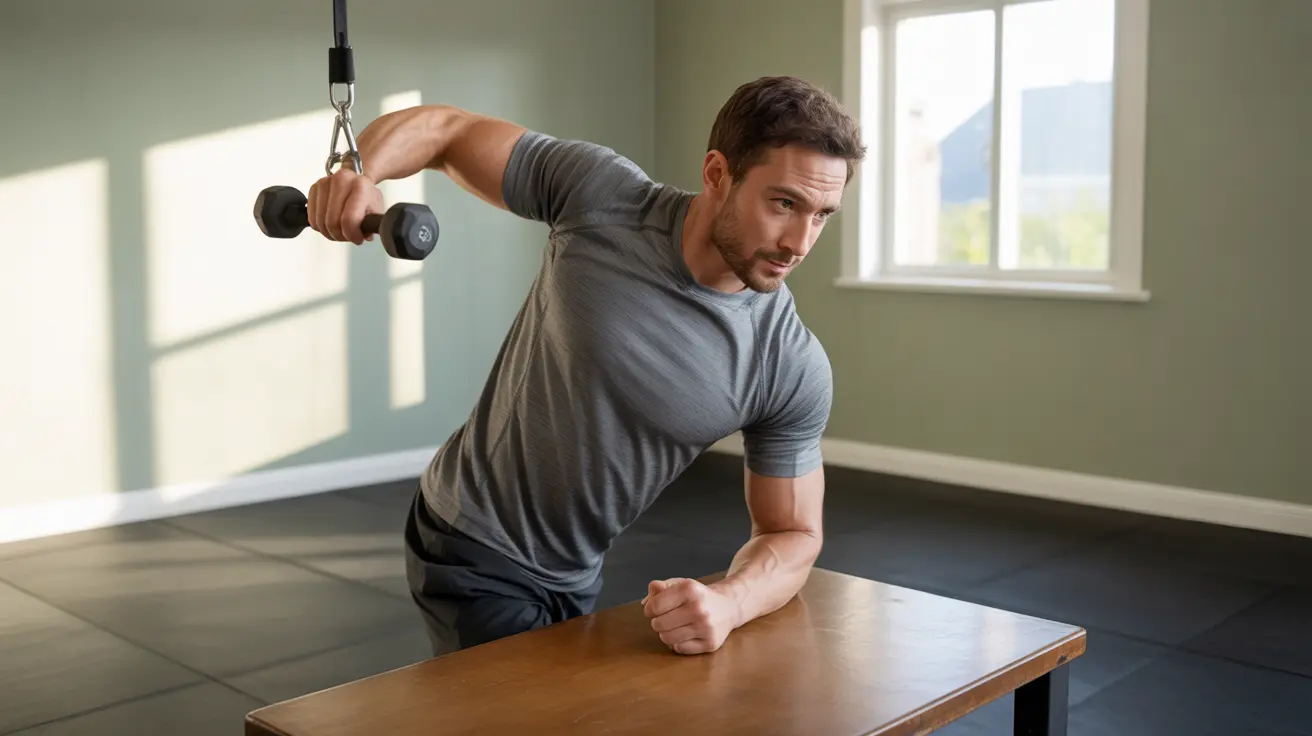Understanding and performing the right rotator cuff exercises is crucial for maintaining shoulder health, recovering from injuries, and preventing future problems. Whether you're rehabilitating from an injury or working to strengthen your shoulders, a proper exercise routine can make a significant difference in your mobility and comfort.
In this comprehensive guide, we'll explore effective rotator cuff exercises, proper techniques, and important safety considerations to help you achieve optimal shoulder function.
Understanding Your Rotator Cuff
The rotator cuff consists of four muscles and their tendons that work together to stabilize your shoulder joint. These muscles include the supraspinatus, infraspinatus, teres minor, and subscapularis. Each plays a vital role in shoulder movement and stability.
Starting with Basic Rotator Cuff Exercises
Pendulum Exercise
This gentle exercise is often the first step in rotator cuff rehabilitation:
- Lean over slightly with your good arm supported on a table
- Let your affected arm hang down
- Gently swing your arm in small circles
- Perform for 30 seconds, 2-3 times daily
Isometric Shoulder Exercises
These exercises involve pressing against a fixed object without moving the joint:
- Stand facing a wall
- Press your arm against the wall without movement
- Hold for 5-10 seconds
- Repeat 10 times in different positions
Advancing to Strengthening Exercises
External Rotation
This exercise targets key rotator cuff muscles:
- Lie on your unaffected side
- Hold a light weight or resistance band
- Keep your elbow at your side
- Rotate your forearm upward
- Perform 2-3 sets of 10 repetitions
Internal Rotation
Complete this exercise to balance external rotation work:
- Stand sideways near a door with resistance band
- Pull the band across your body
- Keep your elbow at your side
- Control the movement in both directions
- Perform 2-3 sets of 10 repetitions
Safety Guidelines and Progression
Always start with gentle exercises and gradually increase intensity. Stop any exercise that causes pain and consult your healthcare provider if you experience persistent discomfort. Progress should be steady but conservative to prevent setbacks.
Frequently Asked Questions
What are the best rotator cuff exercises to strengthen my shoulder and reduce pain?
The most effective exercises include pendulum swings, isometric exercises, and controlled external and internal rotation movements. Start with gentle exercises and progress gradually as strength improves. Always perform exercises pain-free and with proper form.
How do I perform rotator cuff exercises safely without causing further injury?
Begin with gentle movements, maintain proper form, and never force movements that cause pain. Start without weights, then gradually add light resistance as strength improves. Always warm up before exercising and stop if you experience sharp or increasing pain.
When can I start doing rotator cuff exercises after a shoulder injury or surgery?
The timing depends on your specific injury or surgical procedure. Generally, begin with physician-approved exercises as soon as cleared by your healthcare provider. Most rehabilitation programs start with gentle pendulum exercises and progress gradually based on healing and comfort.
Which common exercises should I avoid if I have a rotator cuff injury or after rotator cuff repair?
Avoid overhead movements, heavy lifting, sudden jerking motions, and exercises that cause pain. Initially, avoid bench presses, military presses, behind-the-neck exercises, and activities that place excessive stress on the shoulder joint.
How do rotator cuff exercises help improve shoulder range of motion and prevent future injuries?
Regular rotator cuff exercises strengthen the muscles that stabilize your shoulder joint, improve flexibility, and maintain proper shoulder mechanics. This enhanced stability and strength helps prevent future injuries and maintains optimal shoulder function during daily activities.




